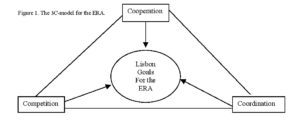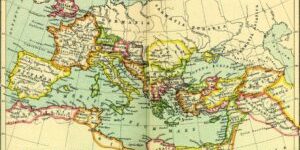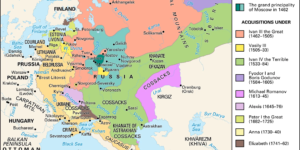The Vrije Universiteit And South Africa ~ Good Neighbours And Far Friends: The Netherlands, Europe And South Africa
No Comments yet Science in transition
Science in transition
The 21st century heralds the age of globalisation. Our world is moving towards an integrated and interconnected network which forms the backbone of interaction, communication, transport and trade. It is noteworthy however, that there are manifest examples of globalisation avant la lettre, notably science. The history of our world has convincingly demonstrated that science – as a professional intellectual activity – has grown to maturity in an open world that was not restricted by national borders (Van Doren 1991). Copernicus, Erasmus, Descartes or Einstein; they all illustrate that the search for new knowledge and insights transcends national interests and is not confined to national territories. The global nature of science calls also for international cooperation. To the same extent that the economies of nations are best served by labour specialisation and international trade in an open liberal market, are academic knowledge centres (such as universities and research laboratories) best served by the free exchange of information through scientific collaboration (for example in the form of joint research programmes).
With the advent of modern ICT and the development of fast international transport, our world witnesses an unprecedented rise in interaction and communication among scientists. Distance is no longer an impediment to international contacts. And scientific cooperation follows the laws of international trade, by seeking selectively for those modes of cooperation on a world-wide market that are beneficial to own research interests.
Europe has in the past decades show a remarkable growth towards cooperative science markets among its member states, which would be in the interest of both individual participating nations and Europe as a whole. The so-called Framework Programmes have laid the foundation for new forms of scientific cooperation which were hitherto unknown in Europe. But science is not restricted to the domain of Europe, and supersedes its borders. We already witness the first signs of Transatlantic research programmes, we observe first modest signs of collaborative agreements with Asian countries, and we will soon see the development of common research policies with new emerging economies. And South Africa is one of them.
In this contribution I will first give a concise sketch of changes in the European science domain, followed by an exposition on the importance of investing in the European knowledge society. Then I will outline new pathways in the European research landscape, and subsequently address new research policy tasks and new opportunities for research councils. Finally, I will discuss new chances for scientific cooperation between the Netherlands (and Europe in general) and the emerging economies (including South Africa). The paper will be concluded with a brief overview of Dutch-South African modes of cooperation and will suggest new future endeavours.
Ambitions and challenges for Europe
Europe has been a cradle of science and culture for many centuries. But Europe has not managed to maintain its dominant science position in our age of global science competition. This is a source of deep concern. Is Europe capable and ready to cope with the great challenges of our millennium? And will a knowledge-intensive society be a panacea for all weaknesses in the current socio-economic systems of Europe? Who will assume responsibility for the science future of Europe? And what will global science competition mean for Europe?
It should be noted at the outset, that the history of European culture has been decisively influenced by a strong science orientation, which has created progress and prosperity. Europe has become one of the leading world regions in terms of innovative capability and highly skilled human resources which have created unprecedented welfare for many European countries. Science-driven research – ranging from fundamental to applied research – has created a wealth of innovations, which have laid the foundation for a modern knowledge-based society that is predominantly characterized by strong international ties.
Indeed, modern science is increasingly characterised by a strong internationalisation process, as is, for instance, witnessed by a multiplicity of cooperative agreements between research institutions in various countries or by a rising number of multi-country authorships of scientific publications. The rising cross-border orientation of scientific research prompts various challenging questions: Is Europe able to keep pace with the unprecedented dynamics in scientific development in our globalising world? Are the national and European research (funding) systems sufficiently and effectively addressing the far-reaching challenges of the emerging European knowledge economy? Is the result of national funding mechanisms for science-driven research in Europe comparable to that of competing regions like the USA and emerging economies like China or India? And is Europe able to translate its scientific performance into welfare and prosperity?
These challenges call for a critical review of European achievements. Whilst Europe has moved in the past decades to a common market for goods, services, people and capital, the market for scientific research is still mainly nationally oriented. Despite the plethora of advances in the European knowledge-based society, two significant concerns have to be recognised. In the first place, the demand and user side of Research and Development (R&D) is often insufficiently addressed in Europe. As a consequence, excellent knowledge does not always lead to the best entrepreneurship, the highest innovation rate or the most favourable growth path of the economy. Secondly, several national efforts outside the Framework Programme (FP) of the European Commission (EC) to invest in science-driven research in European countries lack focus and critical mass in many cases, with the consequence that the existing fragmented national funding schemes in Europe do not generate the maximum possible revenues and the high-quality knowledge intensity that is required to keep European industry internationally competitive. There is an urgent need to cope with fragmented science systems in Europe.
European policy-makers have in recent years fortunately reached an agreement on the ambitions of and clear commitments to the European knowledge economy as well as on the amount of R&D spending in Europe, as laid down in the Lisbon and Barcelona agreements which act as milestones of the European Research Area (ERA). From the side of both the science community and policy-making bodies the awareness is growing that new institutional constellations may be necessary to reinforce the position of science-driven research in European countries in association with the ERA. Europe needs change in order to ensure a place on the global science platform. It ought to be recognized that the European knowledge society is suffering from several flaws which preclude an optimal use of its resources and its scientific talents. The most prominent weaknesses of the knowledge system in Europe are:
– A systematic and structural underinvestment in scientific research (including R&D), in both the private and the public sector;
– A lack of focus and mass in world-class research, caused by fragmented research strategies and funding mechanisms in Europe and by uncoordinated investment plans in large-scale research infrastructure facilities;
– The diversity in R&D mechanisms among European countries, which may lead to intra-European ‘cannibalism’ in research and innovation policy while neglecting the global battle field where the future is shaped;
– The co-existence of various research funding mechanisms (both private and public), which lead to overlap and duplication in research efforts (leave aside financial inefficiencies);
– The absence of benchmarking systems through which real European top quality of scientific research can be identified.
Such weaknesses are a source of distress among the research community in Europe (including the research councils) and should be addressed with priority.
Several questions emerge from the previous alarming observations: Is Europe taking its mission as a generator of world-class research and innovation endeavours seriously? Is there sufficient awareness that science is taking place in an open international (that is, global) market and that Europe cannot afford the luxury to lean back by referring to its glorious past? Is Europe prepared to invest in the best it has (that is, human talent) as well as in advanced research infrastructure? And are research councils prepared to give up part of their autonomy in order to design a shared road towards high European achievements in science? The current European research landscape resembles the description of the Italian nation-state by writer and former minister of Piedmont, Massimo d’Azeglio, who pointed out, when the nation-state of Italy was created in 1861: ‘We have made Italy, now we have to make Italians’. Europe still has a long way to go!
A need for innovative knowledge investments
The search for unknown frontiers is a never-ending story. New pathways and discoveries in Europe were always instigated by curiosity-driven research. In the long European history, science has always been the trademark of Europe. In the ancient Greek period, the famous statesman, scientist and writer Euripides once stated: ‘knowledge is more important than a strong arm’. The message –more relevant today than ever before – is that the best way to serve society is to invest in education and research; in the European history we can find thousands of examples confirming this claim. For example, what would have been the position of Europe in international trade in the past centuries, had it not invested in cartography as a leading scientific discipline in the 17th century? Investment in knowledge (education, R&D) is of critical importance for economic progress and prosperity![i]
Science used to be an individual knowledge activity in past centuries, but the functioning of modern societies is so much determined by the pervasive nature of scientific knowledge that nowadays we often speak of the knowledge-based economy. And indeed, modern economic development is to an important extent determined and driven by the fruits of this knowledge economy. As a consequence, knowledge has in recent years become a key driver for growth of cities, regions and nations. Access to knowledge is, therefore, generally recognised as a key condition for innovative activities in our modern society.
Consequently, both the creation and the dissemination of new knowledge may act as a critical success factor for urban, regional and national growth. Knowledge has, however, important characteristics of a fluid good, which also gets obsolete easily. The life cycle of knowledge is getting shorter all the time. Knowledge also has various features of both public and private goods. These characteristics of knowledge prompt a wide range of questions regarding knowledge, research and science policy in Europe. Is knowledge ‘manna from heaven’ that will descend in equal shares to all nations? Can Europe obtain a strong international position, with a passive attitude of the EU? And can European countries afford to work in ‘splendid isolation’ or is Europe only part of a global knowledge economy?
Clearly, in recent years the scene of science policy in Europe has changed, but whether Europe has managed to create effective new structures for growth and innovation that would lead to a promising bright future remains to be seen. A major advantage compared to the past is certainly the emerging broad willingness for research cooperation in Europe, as is witnessed in EU Framework Programmes and by several recent initiatives of the EUROHORCs (such as the European Young Investigators programme and the ‘Money Follows Researcher’ programmes).
Admittedly, scientific cooperation among European countries has already a long history; it has adopted different forms ranging from bilateral covenants and intergovernmental agreements to EU-instigated framework programmes. With the advent of the ERA a recent much discussed issue has been whether the national markets for science-driven research should be opened up for all European countries. An open research market would have many advantages for scientific achievements, such as:
– Significant enhancement of the quality of scientific research (e.g., through more competitive bids and strict benchmarks of evaluation standards and procedures);
– Stimulation of research mobility in all academic ranks within the EU countries;
– More efficient use of large-scale research infrastructures among EU countries;
– High international research standards resulting from trans-national scientific cooperation and networking and from open access to research programmes;
– A visible and appealing research profile of EU countries on a world-wide scale.
The widely accepted policy goal to establish a European knowledge society which would be internationally competitive and even at the forefront of science development in our world has prompted a vivid debate on the necessary investments in our knowledge society. Do public expenditures on knowledge creation and dissemination matter? Or can we remain passive and buy knowledge on a world market? This question has intrigued many policy-workers and researchers. They often refer to Silicon Valley types of development, to North-Carolina, to Finland, to Taiwan or Singapore, where research has created on avalanche of spin-offs in the form of innovations, new start-ups, licenses and patents, and so forth. Europe will soon be facing a severe competition at the global level. How should we respond when we know that China only in its 53 Science and Technology Parks will already need 4 million knowledge workers? And what to do if already now India has a serious shortage of R&D personnel and is planning a rigorous brain gain policy? It is undoubtedly true that knowledge-intensive regions with a research-benign climate tend to grow faster than others, as is witnessed by the fast growth pattern of the ICT sector in Bangalore.
Clearly, public expenditures in science and technology are not the only critical success factors for accelerated economic development. Other factors, such as the development of timely niche markets (for example ICT or biotechnology) are important as well. For example, Roller and Waverman (2001: 909-23) demonstrate that there is a significant positive causal link between telecommunications infrastructure and economic growth for 21 OECD countries over 20 years. Responsive governments may see it as their task to orient their R&D expenditures towards promising new market niches. This message is also reflected in the new growth theory in economics which stipulates that public policy is not only driven by demand stimuli, but also by endogenously determined factors such as infrastructure, education, innovation and the like (Nijkamp 2005). The diversity in all these explanatory frameworks has however, one element in common, viz., the importance of knowledge availability and access. Knowledge creation and diffusion is to a large extent a mission of academic research and education institutions (universities, research laboratories, colleges, high schools etc.), so that governments are not a neutral actor in this context. The size and direction of public expenditures on science and education may exert a decisive impact on the prosperity and well-being of nations or regions. But how significant is this premise in a real-world setting? And what is the benefit of research expenditure for economic performance?
The strategic policy question whether public expenditures – in general or for specific policy domains – enhance or retard economic development has been the subject of heated debates in the past, with an interesting mix of scientific and policy arguments. A recent study by Nijkamp and Poot (2004: 91-124) tries to avoid various traps in this debate by presenting the results of 123 empirical and officially published studies on (categories of) public expenditures and economic growth for a great variety of countries and for different time periods.
The findings can concisely and schematically be summarized in the following table (see Table 1). The conclusion is clear: public expenditures do matter! More precisely: Europe will not be able to reach the Barcelona and Lisbon ambitions, if public expenditures on R&D are not significantly increased. On top of it, private R&D expenditures are equally critical. But it should be added that sheer money is not enough! We need more initiatives for change in Europe, in particular the organisation of research. We will now address some basic flaws in the institutional ramifications characterizing in the European research landscape.
New pathways in the European research landscape
The need for a re-orientation in European science policy is undisputed. Europe has historically been the cradle of civilisation thanks to its strong science base. Europe has become in the past centuries also the home of science. In the same vein Europe has provided a source of innovation in many fields of industrial and economic activity, as, for instance, exemplified in the Industrial Revolution some 150 years ago. At present however, the scientific position of Europe is less firm and even slightly hesitant.
Nowadays, Europe sometimes tends to be a follower – fortunately, not in all respects – and sometimes Europe tends to be more a passive science consumer than a proactive science producer. Hence, there is a danger that Europe may be losing momentum. Clearly, there are also good elements, sign-posts for hope so to say, such as the Lisbon Declaration, the Barcelona Agreement, and more recently the communication by Commissioner Busquin on ‘Europe and Basic Research’. Increasingly we are facing in Europe the intriguing question: Do we have sufficient scope for an open market for research in Europe? Will a new institutional constellation for scientific research help us? This question is in fact not new; it has been discussed already several decades ago by important policy-makers such as Spinelli and Dahrendorf, but politically this issue has never materialised in the form of a common market for research (Nijkamp 2003: 79-85).
Fortunately, we have at least various good examples of research cooperation all over Europe which may act as catalysts, such as, bilateral, trilateral or multilateral agreements; we have also inter-governmental arrangements, and furthermore we have network arrangements instigated by the European Commission. All such cooperation modalities have their own merits. Nevertheless, the bitter reality is that nowadays we still have to a large extent segmented national research markets with many feeble elements such as the lack of critical and visible mass. The efficiency benefits of a more open science market, however, are rather evident from an economic trade perspective. We would be able to achieve much higher scientific quality through competition. We also would be able to stimulate a better through-flow of researchers all over Europe and maybe also from outside of Europe. And we would certainly be able to put in place high standard review protocols, which certainly do exist in various individual countries, but are not commonly shared with other countries, so that we do not know exactly how research performance in a given country compares to other European countries. In addition, we would have a more efficient use of and better access to large-scale research facilities. An important demographic concern – also in view of the demographic cycle in European universities where in ten years’ time some 40 per cent of the existing staff will retire – is related to future talents: how do we get the next scientific generation incorporated into our educational and research systems? It would be a major benefit, if the issue of the next generation in Europe could be collectively tackled. And finally, we would have a better use of proper benchmarks for review policies of funding agencies. These issues have been discussed rather intensively in recent years. The question is how much time do we have to wait and to discuss. Admittedly, the scene in Europe is certainly not overall negative; we can be proud of many scientific highlights that have been achieved, but we are no longer on a rising edge. New initiatives are needed to cope with the rising tide of global science competition. And Europe has to play a pro-active role.
Europe forms at present a patchwork of largely fragmented national research systems. The Lisbon Summit declaration (March 2000) states the ambition to make the EU ‘the most competitive and dynamic knowledge-based economy in the world by 2010, capable of sustainable economic growth, with more and better jobs and greater social cohesion’. Europe has a diversity of actors in the research field, and this leads to a case of a so-called `prisoners dilemma´. If all actors act from the perspective of national interests, then the final result is not optimal from a collective viewpoint. This social dilemma clarifies that neither individualistic national research policy nor free-rider research policy will help to achieve the Lisbon objectives. Europe is forced to change its fragmented research systems, if it wants to reach a visible and recognized top position at the global research ladder. Competition, cooperation and coordination are a sine qua non for innovativeness in Europe. These critical success conditions can be comprised in a so-called 3C-model (see Figure 1) which maps out the ingredients of a European survival kit!
New research policy tasks
Innovation and prosperity in Europe cannot be inherited, but have to be acquired by dedicated strategies. When the conclusion is correct that Europe should have a shared mission regarding its science and research policy, then the question is: which promising, realistic and feasible initiatives can be envisaged so as to achieve the broadly accepted goal of the most intensive knowledge society leading to a high economic and social performance? And what is the task of research councils and funding agencies in Europe?
In the past years most debates have centred around the necessary changes in the EU Framework Programmes (culminated in particular in the recently published Marimon Report and the Kok Report), as well as around the creation of a European Research Council (ERC). Clearly, the ERC is a strategic vehicle for the realisation of the ERA. The task of the ERC would be to favour European research excellence. It should be clear at the outset that the ERC complements and completes the European research architecture and would by no means replace existing research councils, but would rather build on them and even reinforce them.
An important guiding question for the establishment of a new fund for frontier research at the European level would always have to be: what are ‘the costs of non-Europe’ in the research field? It is evident that the ERC will only be a meaningful institution, if it is able to create scientific synergy on the basis of existing strong national research councils. Consequently, an ERC would have to avoid an unnecessary duplication of national research endeavours (institutions and programmes), and would have to focus on complementary or cooperative initiatives (ranging from small-scale projects to large thematic programmes), while respecting the subsidiary principle. It is evident, that an ERC would have to operate under low transaction costs and would have to avoid any increase in bureaucratic burden. The creation of the ERC is just a matter of time. But it would be a strategic mistake to limit the role of the research councils to the specification of conditions to be met by an ERC. Research funding agencies have their own intrinsic position in the European research landscape. Clearly, the long-run demarcation of tasks between national research councils and the ERC is an issue of great importance. Here again, the 3C-concept may be helpful to design the roadmap for research excellence in both Europe as a whole and in its constituent member states. This will now briefly be discussed.
Competition at the European level is necessary to achieve the highest possible research performance. Cooperation is necessary to avoid a waste of resources and duplication of efforts as well as to ensure a fruitful use of research findings in European industrial and policy sectors. And coordination is needed to cope with fragmentation in European science policy. By implementing the 3C-principles, many challenges in the emerging dynamic environment in which European research policy is evolving can be addressed. I see several such challenges:
– Capacity building;
– Talent development;
– Scientific partnership;
– Large scale research facilities;
– Integration of accession and pre-accession countries;
– Embeddedness of research in society and industry.
The first challenge concerns the need for proper applied science to overcome the knowledge paradox in Europe, where we sometimes have excellent research results with an enormous number of international publications in the most prestigious journals but low application rates in industry and in government. Apparently, at present, European competitiveness is not always leading to the best results for industry and policy, and a shared vision needs to be developed and implemented. Capacity building is a task for all European counties and will help to bridge socio-economic gaps inside Europe.
A second challenge which ought to be addressed is talent development, especially for the younger generation, also in the light of the demographic cycle referred to above. The next generation of young scientists should be addressed more explicitly in research education. International mobility should be favoured, including non-Europeans who might be willing to come to Europe. On a recent tour through Asia, I found it rather stunning to see that in countries like Japan, Taiwan, China, Korea or Singapore, most of the universities would send their PhD students to the United States almost automatically. They would not even think of Europe. Why not? We are convinced that the research climate can be very interesting in Europe, but the mindset in many non-European countries is oriented towards other parts of the world. Consequently, we need a dedicated policy to attract young people toward Europe. It is of critical importance that Europe is a learning house for scientific development and training for scientific talent all over the world.
The third challenge to be addressed is scientific partnership among research agencies and the EU in order to cope with fragmentation. This is a different challenge compared to research excellence. Fragmentation has to do with lack of co-operation inside Europe and sometimes also with a feeble, uncoordinated innovation potential within our European countries. Often, we tend to concentrate more on intra-European competition, i.e. competition between countries in Europe, rather than putting our efforts together at a global world-wide level. It ought to be recognized that essentially the playing field of scientific research is not exclusively oriented towards Europe; it is the world as a whole. The fragmentation in Europe may sometimes also lead to duplication of research efforts in different countries. This weakness in the European research system is also identified in various OECD studies which have clearly demonstrated that in many countries almost all research groups in a certain area tend to concentrate on largely the same domain. It may be questioned whether duplication is a good spending of public money.
A next challenge is the national bias in large-scale research facilities. The scale of research infrastructure is growing bigger and bigger, while also the humanities and social sciences need more and bigger research facilities. This is a domain where Europe certainly should improve its performance. There are questions of open access, but also of co-ordination of decision-making in view of a better profile of Europe. If we do not have the most sophisticated research facilities in Europe, we will not be able to keep the young generation inside Europe. This means that the strategic needs for Europe have to be mapped out more precisely on a long-term basis. Here also the industry forms a strategic partner.
In the fifth place, there are also important questions on equal long-term opportunities for new EU member states accession countries and pre-accession countries. Such countries have a great potential, because in many of these countries we find indeed intellectual magnets with a great scientific performance – though not in all cases – and hence we need to develop a pathway toward equity conditions from a longer-term perspective. However, it is also realistic to state that it would not help very much if we would create a situation of positive discrimination.
And finally, it ought to be recognized that the European knowledge-based society cannot be realized in isolation. Knowledge institutions (universities, research laboratories, innovation centres and the like) are part of our shared knowledge culture. Their strength will rest on interaction and exchange, that is, on communication between all stake-holders. If Europe wants to be a strong player in a global world, it cannot afford fragmented research and innovation systems. To achieve the high Lisbon and Barcelona ambitions, the above 3C-model – based on conditions of competition, cooperation and coordination – must be put in place. And of course, research councils in Europe will have to play a key role in this new European constellation. The new challenges and fascinating tasks put on the shoulders of research councils in Europe will be outlined in the next section.
New opportunities for research councils
Any discussion about a re-positioning and strengthening of the profile and tasks of research funding bodies in Europe should appreciate the fact that the total budget of all councils in EU-25 adds up to some 20 billion euro. Compared to the EU research budget this is a formidable amount exceeding the EU research budget with at least a factor 5! Therefore, it seems wise policy not to develop new strategies out of a perception of weakness, but to start new initiatives that will reinforce the strong and successful elements in research funding in Europe.
Wise research policy by the research councils in European would drive behavioural and policy change in the remaining part of the European funding system. That goal does not only apply to the implementation of the ERC, but also to other new mechanisms such as Technology Platforms and new ERANET-plus arrangements seeking for a linkage of national research programmes. Research councils should be able to identify and finance the intellectual magnets in the European research system through a balanced funding of human resources and research infrastructure capital using the 3C-concept as a device for their policy. In this way, a real value added in the European research system may be created. Research councils are in this view the natural partners of the European Commission. The new agenda of research funding agencies in the context of the ERA is vast. I see several – non-exhausting – strategic anchor points for the implementation of such an ambitious agenda:
* Human intellectual resources:
– EURYI (European Young Investigators programme);
– ERC (European Research Council);
– MFR (Money Follows Researcher);
– National liaisons with Marie Curie Programmes ;
– Promotion of science literacy in Europe through e-learning mechanisms, science weeks etc.;
* Research infrastructure facilities:
– Reinforcement of ESFRI (European strategy Forum on Research Infrastructure);
– Open access conditions through European grid technology;
– Design of common digital information systems (archives, e.g.);
– Design of shared large-scale social science data bases;
* Strategic collaboration:
– Partnership with the European Commission in the ERA;
– Innovative Forward Looks for identifying new science trends;
– Transformation of EUROCORES and ERANET-plus into EUROPACT (‘European Partnership and Cooperation’ programme);
– Clearing house for the rest of the world;
– Mutually recognized joint evaluation procedures;
– Integration of (pre-)accession countries;
– Creation of a platform for European research stakeholders;
* Practical collaboration:
– Professional competitive review procedures;
– Exchange of information of good and bad practices;
– Equal opportunities in science participation (gender, age, ethnic groups);
– Development of joint graduate research programmes;
– Design of benchmark procedures for research assessment;
– Code of conduct on ethical issues in research;
– Development of a really common European IPR policy.
This list of opportunities and actions is certainly provisional and deserves further critical thought. But I am convinced that working on such an agenda would generate overwhelming revenues for the European research system, in particular:
– More structural network configurations among science and R&D agencies and institutions in Europe;
– Better use of scientific talent in Europe for innovation, industrial development and good governance, and in general for a higher level of welfare;
– Promising pathways for the achievement of Lisbon and Barcelona agreements and targets, while respecting the subsidiarity principle;
– Efficient use of scarce resources by avoiding fragmentation and duplication in scientific research in European countries;
– Avoidance of support for non-superior research projects, through a system of European competition based on transparent peer review systems;
– Encouragement of best practices in evaluation through the introduction of European benchmarks;
– Open access to research participation in individual country’s research programmes (of course, on the basis of symmetric arrangements);
– Creation of more flexible career paths for young researchers in Europe in order to induce a favourable research climate that would retain researchers in Europe (or attract researchers to Europe) and avoid brain drain;
– Development of joint research training programmes for young promising researchers;
– Protection of the viability and vitality of ‘small disciplines’ through the creation of a broader critical research mass among European countries;
– Efficient co-operation in the use of large research facilities, as well as visible participation in global or international research programmes;
– Stimulation of new research endeavours (e.g., multidisciplinary initiatives) by linking knowledge and research from different countries, for instance, via large-scale technology programmes;
– Open flexible research networks with access possibilities for new participants at any convenient time.
We may thus conclude that Europe – on the basis of its Lisbon and Barcelona agenda – has defined an ambitious road map for its future. By doing so, it has taken its future in its own hands. Knowledge and innovation are bound to become the signposts of a new Europe. The transformation process may be difficult and sometimes painful, but through partnerships based on the 3C-principles there is no reason for despair. ‘Together strong’ is essentially not a risky invention for Europe’s future, but is a lesson to be learned from birds that fly in a V-formation rather than at random and which are in this way able to gain an additional action radius of 71 per cent! The real European challenge is to transform diversity into a common strength.
A common strong science profile of Europe is not only necessary for reinforcing the indigenous scientific quality of Europe, but also for becoming an interesting partner for international scientific cooperation. The past decades have shown an orientation of European scientists towards established science countries, such as the U.S.A., Japan or Korea. But the fast dynamics in new emerging economies calls for new forms of cooperation, with other countries. Examples of such emerging economies are China, India, and (most likely) South Africa and Brazil (apart from emerging economies in Europe such as Russia). The next section will be devoted to the opportunities offered by these emerging economies, with special attention for South Africa as a potentially important partner for the Netherlands.
International relations and emerging economies
International cooperation in science is an item that ranks high on any science policy agenda. In a recent policy document of the Dutch Advisory Council for Science and Technology Policy (AWT) a series of strategic proposals is formulated on international research (and innovation) cooperation (AWT 2004).
Seven anchor points for a strong Dutch position are mentioned, viz. a strong participation in the ERA, a global science perspective, facilitation of internationalisation trends in science, making transparent strategic choices for the Netherlands, emphasis on ‘knowledge as a social capital’, linkage between the knowledge economy and the knowledge society, and emphasis on the societal impact and utilisation of knowledge. These orientation points lead to the following anchor points for science policy: favour investigator-driven research, explore innovation opportunities of research, organise research in a proper way with due emphasis on Dutch strengths, and avoid devolution of research efforts over too many research efforts. This requires a strong involvement in European research networks, a better coordination between Dutch and European (and international) research policy (including a monitoring of policy), and a reinforcement of the dissemination of knowledge developed in EU research programmes. The overall strategy would aim to better utilize Dutch strengths in a European setting.
Clearly, the formulation or identification of success cases in Dutch research is not a responsibility of the government, but ought to be the outcome of a bottom-up selection process, in which several stakeholders are involved, such as universities, research laboratories, academies of science, research councils, NGO’s, industries and public bodies (such as ministries of science).
For a small country like the Netherlands, the world is too big to establish research cooperation liaisons with all countries, and therefore a selection of interesting partners is needed. In general, three types of criteria for establishing such links can be imagined:
– Strengthening of scientific quality among partners;
– Maintenance of socio-political or historic-political ties;
– Compliance with socio-economic development goals.
From a science policy perspective, the first goal is a really scientific ambition, and calls for the identification of strong science partners. The second goal is based on political motivation and may probably only receive support in an academic context if the efforts are also funded out of non-science budgets. And finally, developmental goals may be strategic vehicles in science policy, if they favour capacity building to an extent that long-range mutual benefits may be expected. It seems thus clear that the achievement of scientific excellence for both partners ought to be the dominant principle for research cooperation in an international setting.
Recently, we have observed the rise of so-called emerging economies. These are countries characterized by a rapid scientific development and economic growth, as a first stage of an economic and technological take-off process. Sometimes this growth is only concentrated in a few regions in these countries (such as Beijing of Shanghai in China, or Bangalore or Hyderabad in India), but in all cases this growth is based on the utilisation or development of modern knowledge-intensive technology (such as ICT). For a small country like the Netherlands, it is – on both scientific and economic grounds – of critical importance to organise a timely strategic foothold in these countries.
The strategic motivation to be present in these countries and to liaise with their science community stems from various considerations:
– Emerging economies are less seen as less developed regions, but more as self-reliant economic and technological growth poles with a great knowledge potential.
– A focus on emerging economies is more in line with current political views on modern development policy, where the main idea is to favour economic success stories rather than to combat poverty without a clear perspective.
– Various emerging economies have developed in selected areas an advanced knowledge base which may also have great scientific spin-offs for the Netherlands, so that a reinforcement of economic, technological and scientific synergy with those countries may generate high benefits.
– A focus on emerging economies may be a good vehicle to cope with fragmentation in international cooperation in the academic and scientific world in the Netherlands.
– The scientific benefits of a concentration on emerging economies may even be much higher, if there are historical and cultural bonds (like in the case of South Africa).
Consequently, there may be a clear perspective for a national policy oriented toward a partnership with emerging economies, based on a combination of advanced science and economic-technological cooperation.
Scientific cooperation the Netherlands-South Africa
The history of scientific cooperation between the Netherlands and South Africa shows a cyclical pattern, with a deep dip during the period of the apartheids-regime. In the past decade we observe a rapid rise in the number of collaborative science agreements between Dutch and South African universities and research institutes. The current popularity of such agreements is caused by several factors:
– The anticipated mutual benefits of an exchange or collaboration programme between Dutch and South African partners;
– The presence of a well developed and well functioning higher education and academic research system in both countries;
– The increasing importance of South Africa as a knowledge-intensive emerging market;
– The spin-offs of existing collaborative research programmes (in particular, SANPAD – The South Africa – Netherlands Research Programme on Alternatives in Development, partly supported by the involvement of NWO foundation WOTRO, concerned with research in tropical regions).
It is noteworthy that the current research cooperation between the Netherlands and South Africa is rather fragmentised (a website-scan led tot a rather segmented picture of research cooperation agreements). At an official level however, no formal cooperative agreement exists, neither at the level of governments nor at the level of the research councils. Despite various efforts and mutual visits it appeared to be rather difficult to create a structure for a research cooperation that would be significantly more than symbolic, partly as a result of limited financial resources, partly as a result of the fact that universities were already actively involved in cooperative agreements. Now that South Africa is moving from an economic take-off phase to a ‘drive to maturity’, it may – besides historic-political motives – become a very interesting partner for the Netherlands from the perspective of a promising, knowledge-intensive emerging market.
In this context, a renewed interest – perhaps in association with SenterNovem (an executive agency of the Dutch Ministry of Economic Affairs) – is likely to emerge. In that case, the motive for cooperation is not predominantly inspired by the political ideal to support the historically disadvantaged academic groups, but to seek for new scientific endeavours with strong partners.
Why could South Africa be an interesting partner for Dutch scientists? The following arguments seem to offer a motivation:
– Mutual benefits from the development of sophisticated technologies in a variety of research settings (e.g. bio-science, agriculture);
– Presence of a knowledge system in South Africa that is highly complementary to the Dutch knowledge system (e.g., in the area of civil law, disease management, biodiversity, water management, food security or resource management);
– Availability of operational economic models and practices for sustainable development, industry- academia interfaces, or support systems for SMEs.
– Existence of strong common scientific interests in various fields of the humanities (such as language, human palaeontology, theology and philosophy);
– Existence of a common knowledge pool centred around designated research fields such as astronomy, marine research, agriculture, Antarctic research, biotechnology, genomics, micro-satellite engineering, encryption technology, or rural development;
– Availability of a great ‘natural research laboratory’ (e.g., nature and biodiversity, natural resources);
Easy access to each other’s research system at relatively low costs.
Why would the Netherlands be interesting for South African scientists? The following arguments seem to hold:
– Presence of a mutually complementary knowledge base (e.g., in the area of rural development or model design for economic growth);
– Easier access to participation in EU Framework Programmes through cooperation with the Netherlands;
– Shared research interests in fields that are common to both the Netherlands and South Africa (e.g., life sciences);
– Easy collaboration through historical-cultural bonds, common language and cultural identity.
Recent years have shown a gradual development towards more structural and comprehensive forms of research cooperation, such as the TANAP programme (Towards a New Age of Partnership in Dutch East-India Company Archives and Research), centring around the conservation and open access of the VOC archives (partly in Cape Town) and the training of a new generation of historians for this time consuming research. A follow-up is foreseen in the form of ENCOMPASS (Encountering a Common Past in Asia). An example of a structural bilateral programme can be found in SAVUSA (South Africa-Vrije Universiteit-Strategic Alliances), which aims to favour academic quality through progressive emancipation and scientific capacity building, inter alia through joint Dutch-South African publications. Other forms of scientific cooperation between the Netherlands and South Africa exist amongst others through SenterNovem, TNO, the Ministry of Transport and Water Management, and the Ministry of Development Cooperation.
Would there be a need for a more formal country-to-country agreement on scientific cooperation between the Netherlands and South Africa? An answer should not be given on the basis of historical and cultural bonds, but on the basis of the intrinsic meaning of such an agreement for the quality of scientific research in both partner countries. Thus, an affirmative answer would have to originate from a convincing and conclusive investigation of the following issues:
– What is the collective value added of a formal agreement for science quality on top of the benefits of already existing bilateral forms of cooperation? Here one may have to look into criteria like scientific innovation, international science visibility, economising on scarce research resources, access to research facilities or to interesting field work.
– What is the common benefit for individual researchers or research teams in terms of expected scientific progress? Criteria may relate to better research opportunities, exchange of experiences on as yet unexplored research fields, etc.
– Which HRM benefits may be expected from a shared responsibility for excellent research talent or from the shared use of research infrastructures (for example in astronomy)? Relevant criteria may be cost savings, implementation of a dedicated talent policy, etc.
– Which advantages may be expected of a common research agreement for the formulation or implementation of strategic national research programmes? Here one may have to assess the reinforcement of existing research themes, the potential scientific innovation based on a critical mass, etc.
– Which industrial or technological revenues may be expected through the development of common research in the context of emerging markets? Appropriate judgement criteria may be the contribution to an innovative industrial climate, access to new technologies, collaboration with well trained knowledge workers, etc.
– Which forms might a common agreement adopt? There may be a variety of mechanisms, ranging from the development of joint research initiatives to the mutual assistance in formulating research evaluation protocols.
International agreements on research cooperation should not have a ceremonial value, but would have to be based on convincing agreements that support the need for the advancement of new knowledge in interesting research domains. South Africa and the Netherlands are undoubtedly potentially interesting partners, as is witnessed by the great variety of cooperative agreements that already exist at the level of universities. There may be a scope for a new modus operandi between the two sister councils in South Africa and the Netherlands, that is NRF and NWO, provided the previous issues are well addressed and lead to clear answers on the future perspectives of a new type of science collaboration.
NOTES
[i] See also Salter and Martin (2001: 509-32).
References
AWT (2004) Nederlands kompas voor de Europese onderzoeksruimte, The Hague.
Nijkamp, P. (2005) Innovation, space and economic development, Cheltenham, UK: Edward Elgar.
Nijkamp, P. and Poot, J. (2004) ‘Meta-analysis of the effect of fiscal policies on long-term growth’, European Journal of Political Economy 20: 91-124.
Nijkamp, P. (2003) ‘The European Research Council’, Innovation 16(1): 79-85.
Roller, L. and Waverman, L. (2001) ‘Telecommunications infrastructure and economic development’, American Economic Review 91: 909-23.
Salter, A.J. and Martin, B.R. (2001) ‘The economic benefits of publicly funded basic research’, Research Policy 30: 509-32.
Van Doren, C. (1991) A history of knowledge, New York: Ballantine.
You May Also Like
Comments
Leave a Reply










